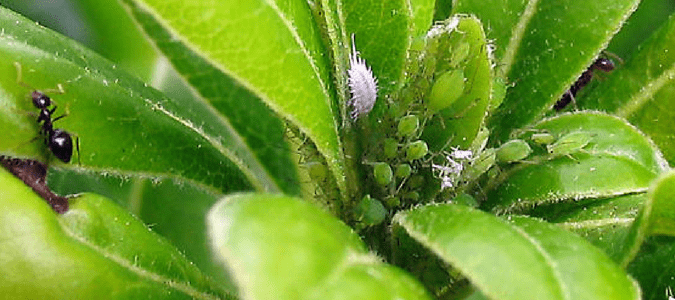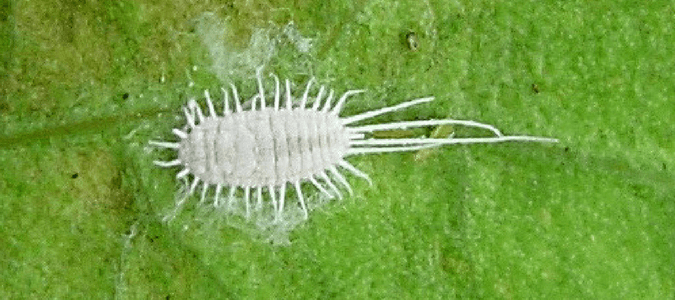 Have you ever found something on a houseplant that you first thought was a tiny piece of cotton, but then you realized was a living thing? Mealybugs can ruin the appearance of your indoor and outdoor plants and cause significant damage. When left unchecked, mealybugs can eventually kill a plant. For such tiny creatures, mealybugs can be surprisingly hard to remove. They are found in warm, moist climates and can be introduced to your home and yard by new plants, tools, or other materials.
Have you ever found something on a houseplant that you first thought was a tiny piece of cotton, but then you realized was a living thing? Mealybugs can ruin the appearance of your indoor and outdoor plants and cause significant damage. When left unchecked, mealybugs can eventually kill a plant. For such tiny creatures, mealybugs can be surprisingly hard to remove. They are found in warm, moist climates and can be introduced to your home and yard by new plants, tools, or other materials.
Mealybugs: A Complete Guide To This Lawn Pest
In this post, we will tell you everything you need to know about mealybugs, including what they look like, their favorite hiding spots, their impact on our green spaces, and, perhaps most importantly, what you can do if you find them feasting on your plants.
Tiny White Bugs On Plants Can Be Harmful
Those tiny white bugs you noticed while watering your plants might be a mealybug infestation. These little pests are typically white, from a wax produced by special glands on the tops and sides of their bodies. Mealybugs are related to aphids, which are also covered with waxy secretions, so these two insects are often confused.
Mealybugs are tiny creatures—sometimes only half a millimeter long—which often congregate on the part of the plant where the leaves attach to the plant’s stem. Aphids are more likely to leave pattern residue on the backside of leaves or a coating on a plant’s stem. Although catching mealybugs on the move is challenging, you can sometimes notice active adults making their way across a plant’s leaves or stem. Do mealybugs fly? Only the adult males. Both insects can cause similar damage to your plants, and you can use some of the same tactics to control these pests.
All plant species are at risk for damage from a mealybug infestation. In warmer parts of the country, citrus and ornamental plants are more severely impacted by this lawn pest. This pest can also attack Tropical plants, woody trees, shrubs, perennials, and annuals. Mealybugs feed by sucking sap from plant roots, crowns, stems, twigs, flowers, fruit, and leaves, leaving behind a honeydew-like residue that attracts ants. The sticky substance provides the perfect conditions for a sooty-colored mold to develop on the plant.
Mealybugs are experts at hiding on roots, in crevices, and under lips and pots and planters. There are many species of mealybugs, all of which are very tiny. Some have longer, little needle-like rods which look like tails, while others have longer rods extending around their bodies. Some species are pink, yellow, or light green, but most are white.
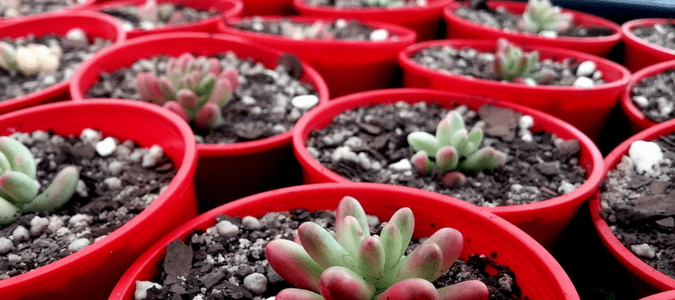
Where Do Mealybugs Come From?
Mealybugs are so small that they can come in undetected from various sources: potting soil, other plants, and fresh produce from the grocery store or farmers market. You are more likely to find mealybugs inside, but you can also find them outdoors. The pink hibiscus mealybug is a native of India and was first reported in Egypt in 1920. It spread to the Caribbean in 1993 and quickly spread through the islands and up to Florida.
Other states such as Alabama, Arizona, California, Georgia, Louisiana, Mississippi, New Mexico, North Carolina, South Carolina, and Texas also suffer economic losses because of the infestation of mealybugs on crops and ornamental plants in nurseries.
If you are wondering what attracts mealybugs, understanding that these pests prefer plants with high nitrogen levels can make you more informed in applying fertilizer and water. Homeowners who overfertilize or keep plants moist may unknowingly make their plants more vulnerable to an infestation.
Where to Find Mealybugs
Mealybugs can look like little pieces of cotton on your plant. They hide in hard-to-see areas like under the leaves, crooks, and crevices of plants like the leaf and stem axis. However, they will infest any area of the plant. When you have one or two females, they can be harder to spot. However, once they start laying their egg sac or the eggs hatch, they are much easier to spot because they tend to cover more areas of your infected plant.
Are Mealybugs Harmful to Humans?
Some mealybugs can spread viruses, but this is uncommon and primarily occurs with species that prefer grapevines. Mealybugs do not bite humans, although coming into contact with these creatures can sometimes cause skin irritation. The sticky residue mealybugs leave behind can be hard to remove from clothing. Wash your hands and clothing after contacting mealybugs to avoid any potential impact.
The biggest threat mealybugs pose to humans is economic. Damage from these pests to crops can be significant, and homeowners may be forced to discard impacted plants in cases of an infestation.
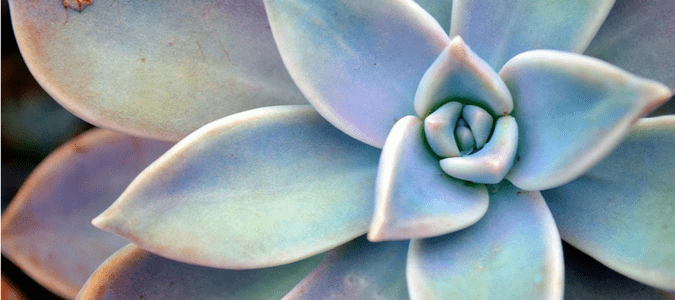
Mealybugs on Succulents
These troublesome pests can be a significant headache for succulent owners. Mealybugs are notorious for hiding in the plant crevices and sucking them dry, especially once the egg sacs hatch. Removing dead areas of the plant can help take away their hiding spots, as well as reduce the occurrence of mold on your plant.
Mealybug Life Cycle
Mealybugs start as eggs and then move into larval and adult stages. Females lay up to 500 eggs in a cottony egg sac attached to plants, fruit, bark, or twigs. After about ten days, the egg sac hatches, and the babies quickly spread out over the plant, looking for feeding sites.
Adult male mealybugs are tiny two-winged insects born unable to feed and die quickly. Their sole meaning for existence is to fertilize the females. In warmer climates, mealybugs can produce up to 8 generations yearly. In more temperate areas, mealybugs only have one or two generations annually.
Mealybugs in Florida
Pink hibiscus mealybugs, reddish-brown or pink with no noticeable filaments or stripes, were discovered in Florida 2001. This species attacks many of Florida’s crops and plants, such as citrus, avocado, fig, guava, mango, sugarcane, asparagus, beans, beets, cabbage, peanuts, cucumber, lettuce, pepper, pumpkin, tomato, bougainvillea, hibiscus, palm, and oleander.
This pest’s impact on agriculture is so significant that a professor from the University of Florida wrote a whitepaper about it, stating that “The overall annual cost of control and damages to the US economy from PHM have been estimated to be US $700 million, with the global total being about $5 billion.”
In Florida, we mainly see the long-tailed, citrus, Madeira, solanum, striped, Solenopsis, papaya, Granara de Willink, Jack Beardsley, and pink hibiscus mealybugs, according to the University of Florida.
Prevention
Before introducing a new plant inside or into your garden, inspect it for mealybugs and other insects. They can hide in protected, hard-to-see plant areas, like the underside of leaves, stems, touching leaves, and leaf axils. Remember to check everything before introducing it into your house or garden: the soil, leaves, stems, fresh produce, and garden tools.
If you catch a mealybug infestation early, you can usually cut off the infected parts of the plant to prevent it from spreading.
As we mentioned earlier, mealybugs are attracted to high nitrogen levels, so don’t overwater or over-fertilize your plants.
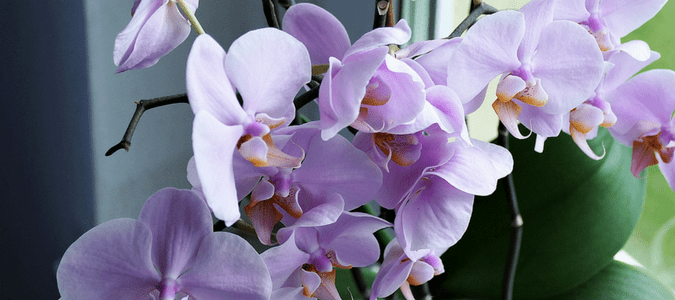
Mealybug Removal Tips
Mealybugs are notorious for being some of the most difficult to remove-pests for homes and greenhouses. If you can catch them before the infestation grows, your likelihood of success is higher. Here are some tips for trying to rid your plants of mealybugs:
- Be sure to remove any infected plant from healthy plants immediately.
- Many people recommend putting alcohol on a Q-tip and applying it to infected areas. We’ve also heard of people putting the alcohol in a spray bottle and spraying that on the plant. If you try this, be informed about how much you pour, so you don’t damage the plant.
- Spraying your plants with high-powered water can also remove these pests.
- Ladybugs eat mealybugs. Introducing beneficial insects, including lacewings, syrphid flies, and tiny parasitic wasps, can help reduce mealybugs on outdoor plants.
- Insecticidal and dish soap have also been known to eliminate small infestations.
- Pruning infected leaves or stems can also help rid them of your plant.
- Introducing the Cryptolaemus montrouzieri is another way to combat these pests since this beetle is known to feed on mealybugs.
- Throwing away the infected plant.
ABC Will Help Protect Your Plants
An infestation can crop up quickly since mealybugs are so tiny, prolific, and expert hiders. Experience an infestation or have trouble handling the problem on your own. The professionals at ABC Home & Commercial Services can help devise a plan to treat the mealybugs and the ants that are attracted to the sticky residue they leave behind. The earlier you schedule service, the quicker the experts at ABC can help rid your plants of these pests before they destroy your plants and garden.
